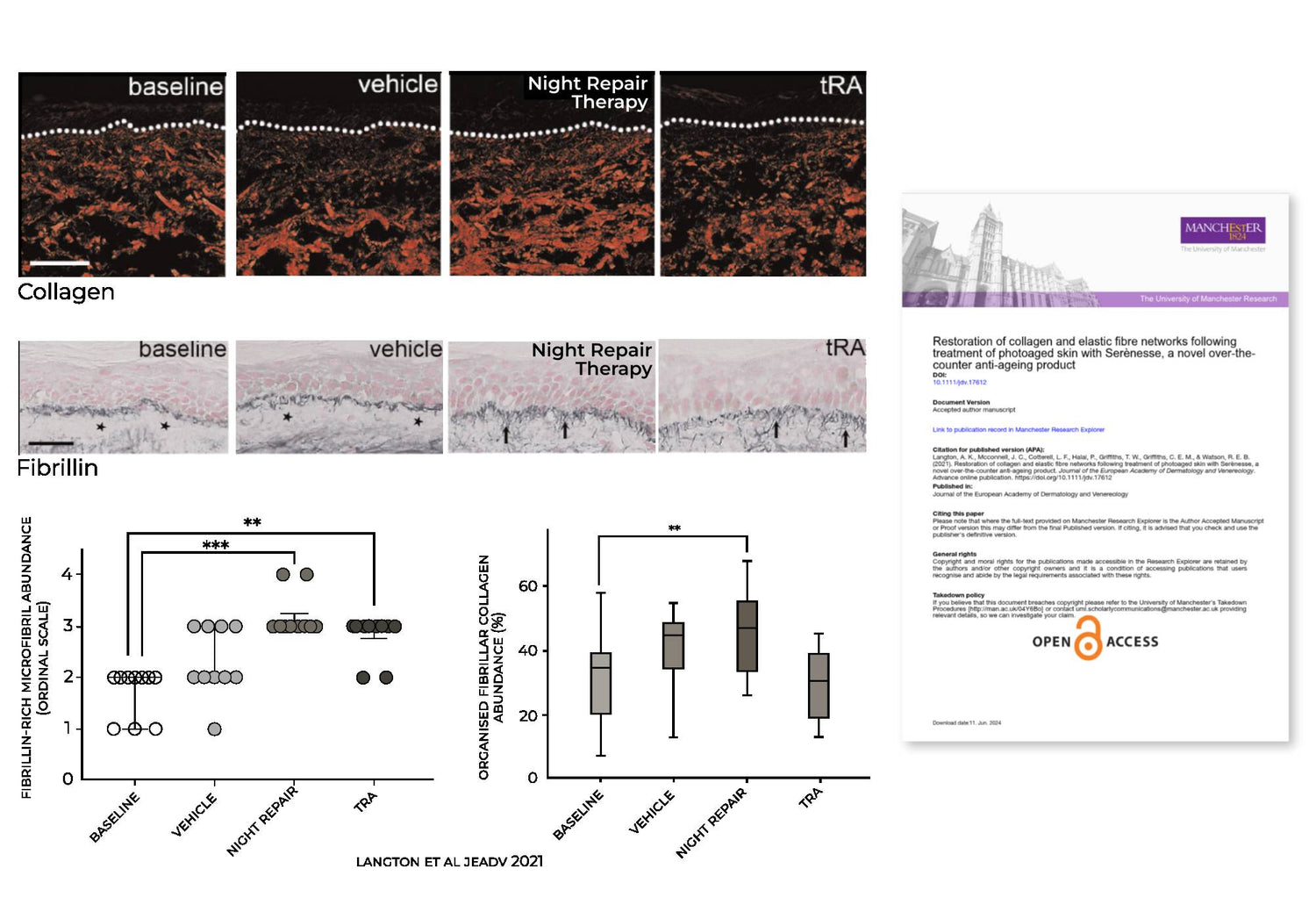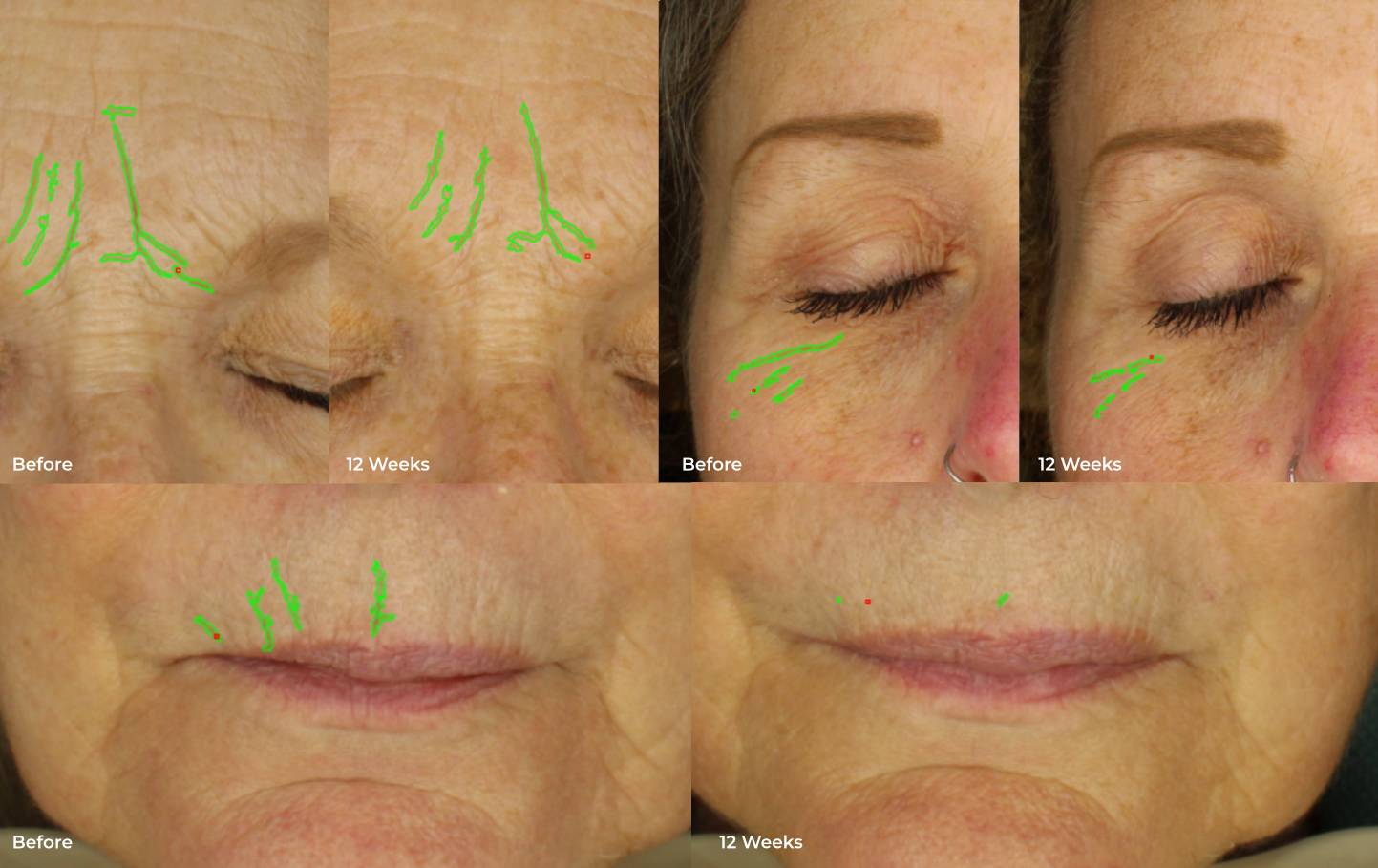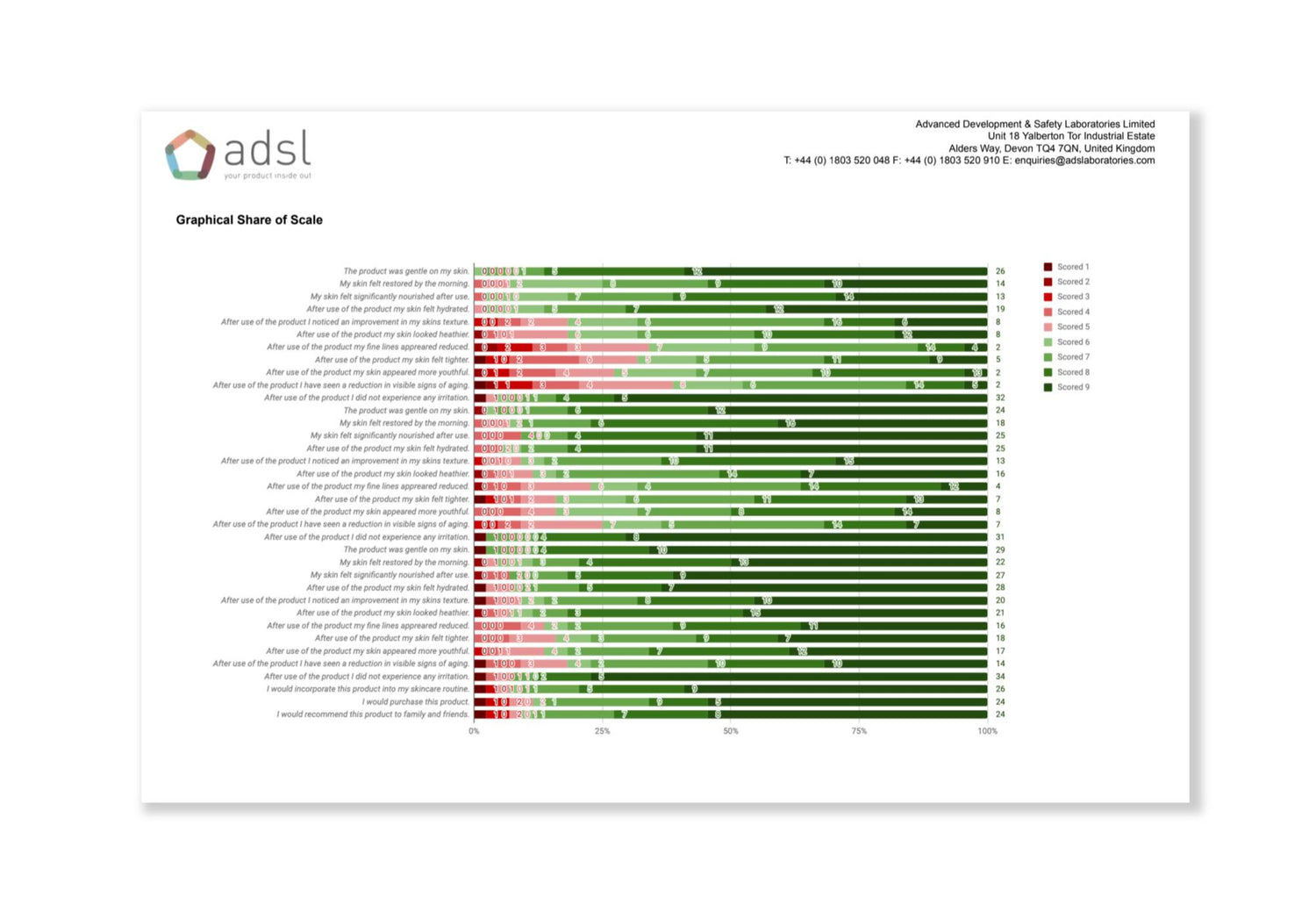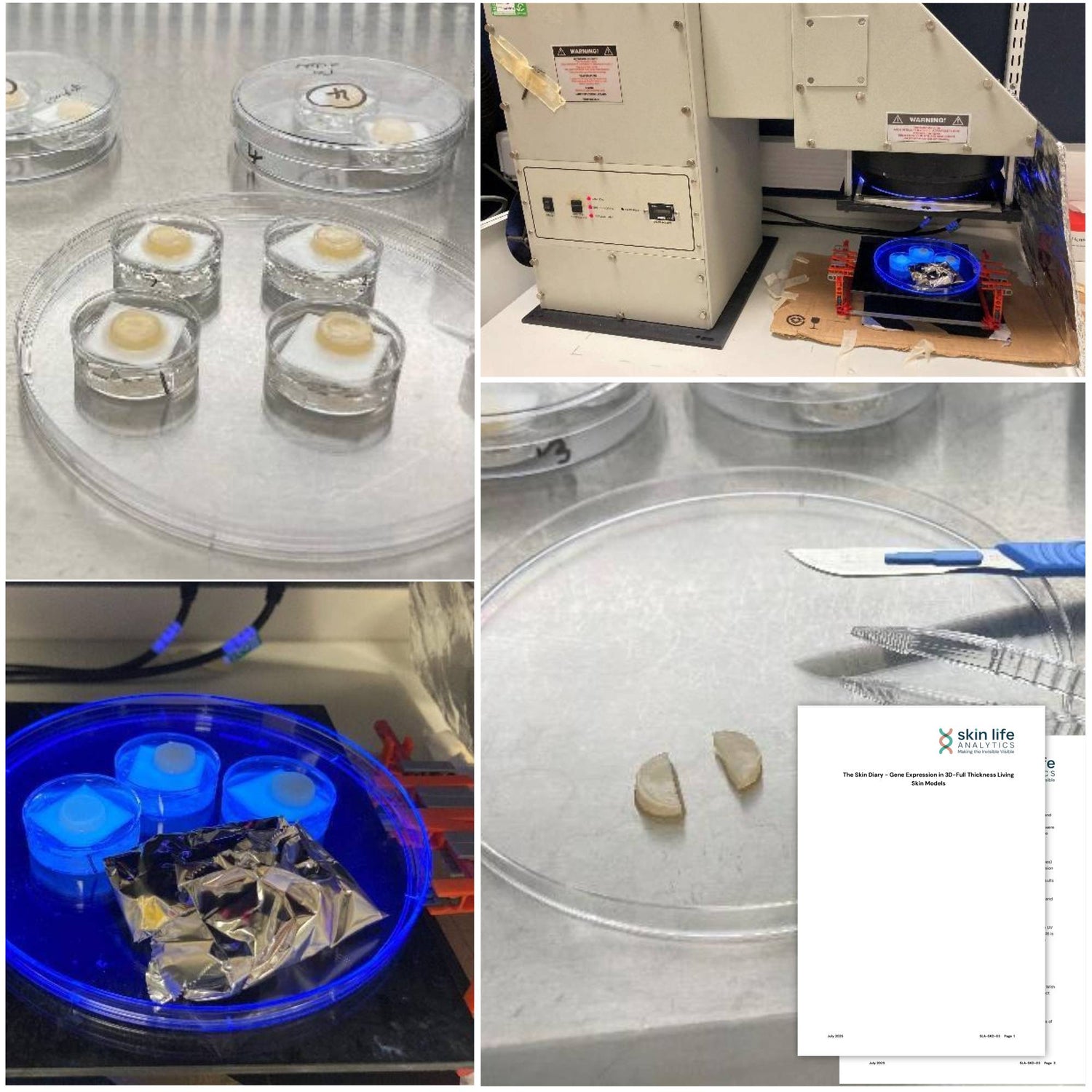Night Repair Therapy Studies

Manchester Patch Test Assay
TEST TYPE
1. Clinical studies assessing biomarkers in human skin—via human biopsies, 3D skin models, or explants—using controlled and intra-patient methodologies
SCIENTIFIC STANDARD
High
PROCESS
Intra-subject controlled, double-blinded study on human volunteers with skin biopsies taken and biomarkers examined under microscope. Validated & benchmarked against tretinoin.
PURPOSE
Rapidly models 6 months of use on live human skin
RESULTS
- Outperformed gold standard (equivalent 20x more effective than retinol)
- 2x increase in collagen
- 2x increase in fibrillin

Clinical Trial
SCIENTIFIC STANDARD
Average
PROCESS
29 people have baseline professional Visioscan in controlled conditions to measure wrinkle depth, images are taken before using the product, at 7 days, 4 weeks and 12 weeks. Computer-measured wrinkles are compared to the baseline.
PURPOSE
A good study to see if visual improvements are obtained from use of the product
RESULTS
-
Significant reduction in wrinkles with statistical significance of p=0.0004

Consumer Trial
SCIENTIFIC STANDARD
Not a scientific approach to testing, but useful from a marketing and product feedback perspective
PROCESS
44 people are provided with the product to use for 12 weeks, volunteers are asked questions about their experience at 0, 4, and 12 weeks.
PURPOSE
This study is useful to understand volunteers’ experience from product use, while it lacks rigorous scientific credentials, it helps to ensure that a person's experience aligns with the scientific results.
RESULTS
- 98% Said the product was gentle on their skin
- 93% Felt their skin was significantly nourished after use
- 93% Said their skin looked healthier
- 86% Noticed a reduction in fine lines
- 86% Noticed their skin appeared more youthful
- 93% Didn't experience any irritation
Age Defence Studies

Gene Expression Study
TEST TYPE
1. Scientific biomarker randomised controlled clinical trials
SCIENTIFIC STANDARD
High
PROCESS
A total of five genes were selected for the expression studies, in addition to one control ‘house-keeping’ gene (GAPDH). The five genes were MMP1, PTGES and the senescence markers p21, p16 and GLB1. The expression levels of the five genes were normalised to the housekeeping gene GAPDH to give fold change values.
PURPOSE
To determine the effects of a physiological dose of solar UV irradiation on gene expression in 3D full thickness living human skin models with and without Age Defence
RESULTS
- Complete protection against UV-induced P21 expression
- Complete reduction of PTGES expression to baseline levels following UV exposure
- Prevents the UV-induced spike in MMP1

